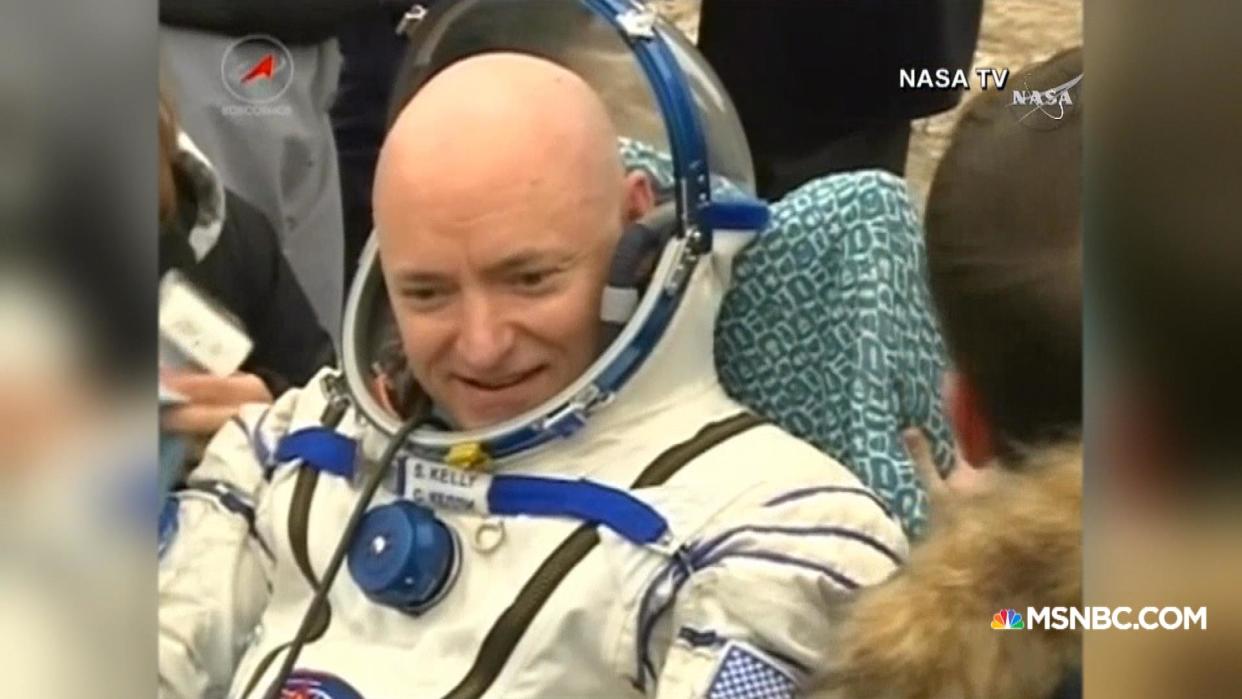NASA's Scott Kelly grew 2 inches: The body after a year in space

After living for nearly a year aboard the International Space Station, NASA astronaut Scott Kelly is two inches taller than his identical twin brother Mark.
One of the main goals of his groundbreaking mission is to study how well humans can endure — mind, body and spirit — on a long-duration spaceflight.
Kelly, who has spent more time in space than any other American astronaut, reports that overall he "feels pretty good" and now begins what may be a year-long project to monitor his health. One unique advantage he provides to NASA's doctors is his identical twin brother, Mark, a former NASA astronaut who spent last year with his feet planted on terra firma.
Welcome home @StationCDRKelly! Your #YearInSpace helps ensure humans are “go” for our #JourneyToMarshttps://t.co/5TkCH23Hwy
— NASA (@NASA) March 2, 2016
Comparing the twins will help researchers spot any genetic changes that might have occurred in Scott in space.
See images of Scott Kelly returning from space:
Meanwhile — here's what National Space Biomedical Research Institute and NASA tells us they'll be on the lookout for:
What a Year in Space Can Do to Your Body
BRITTLE BONES
Astronauts no longer walk to get in the spacecraft, they float so the bones in the legs, hips and spine experience a significant decrease in load bearing.
This leads to bone breakdown and a release of calcium, leaving the bone more brittle and weak.
The release of calcium can also increase the risk of kidney stone formation and bone fractures.
WEAK MUSCLES
Extended spaceflight results in less work for the legs and back: muscles can begin to weaken or atrophy, and this could lead to fall-related injuries and accidents during exploration missions.
PUFFY FACE AND LEGS
In space, blood is flowing more in the upper part of the body and a little less in the lower extremities.
While in space, astronauts often have a puffy face and the legs that are smaller in circumference.
SMALLER HEART
The heart doesn't have to work as hard up there: Over time, this could lead to a decrease in the size of the heart.
There is also a concern that space radiation may affect endothelial cells, the lining of blood vessels, which might initiate or accelerate coronary heart disease.
BALANCE ISSUES
The inner ear, which is sensitive to gravity, no longer functions correctly. Early in the mission, astronauts can experience disorientation, space motion sickness and a loss of sense of direction.
Upon return to Earth, they must readjust to Earth's gravity and can experience problems standing up, stabilizing their gaze, walking and turning.
Photos: A Look Back at Kelly's Year in Space
INCREASE CANCER RISK
Scientists know that astronauts are exposed to higher levels of radiation in space that could potentially lead to cataracts and cancer.
Related: Astronaut Scott Kelly's very social #YearInSpace
MESSED UP BODY CLOCK
There is no 24-hour day/light cycle in space so the astronaut's body clock has to readjust to day/light cycle after return to earth.
And it seems Scott Kelly is correct about his new height.
ASTRONAUTS GET TALLER IN SPACE
Astronauts get a bit taller in space because of the disks of the spinal column: On Earth, the disks are slightly compressed due to gravity. In space, that compression is no longer present causing the disks to expand. The result: the spine lengthens, and the astronaut is taller.
Dr. Felix Gussone is associate medical producer with NBC News; Dr. Shelly Choo is a medical fellow with NBC News
